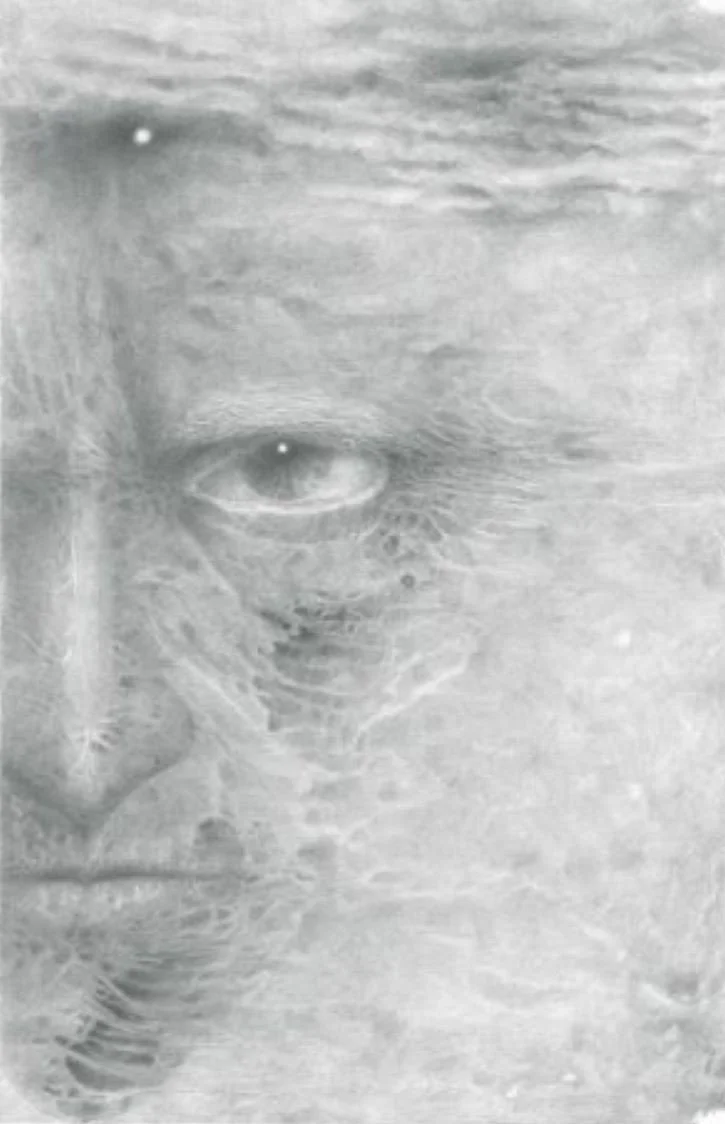WORMWOOD is a graphite on paper drawing. The face is of an imaginary character from a book by C.S. Lewis, “The Screwtape Letters.” The book is a clever way to discuss good and evil. Screwtape is the uncle demon writing letters and words of wisdom to his apprentice nephew about how to keep his “patent” from God, their enemy. In my mind the story continues with Wormwood the former apprentice, now the master; redefining good and evil and what it is in the 21st century—and really what it has always been—the blind spots of ignorance that exist within the reality of the world we construct.
My drawing of Wormwood presents the demon as the consequences to these socially constructed realities. Not everyone has the same social power to negotiate “reality,” creating biases and blank spots in human perceptions of social circumstances and human differences—an example would be how white people have created barriers for black people within our law-making process. Historically, white people have exclusively negotiated our laws with limited to no input from people of color.
Another example is how the Catholic Church’s socially constructed “truths” have huge gapping blind spots for women and people of color. White celibate men do not have the capacity to see the world from anyone perspective other than their own, and their perspective is “God’s perspective,” giving white celibate men unfettered power over the people they rule. Within the Catholic Church women have no social power to construct the theology of good and evil, so, it’s not surprising that women are always the object of the worst sins—for instance why is abortion seemingly the worst sin in the United States of American— because it is solely attributed to women and women have no social power to refute it within the Church. The Church is an iron clad male institution, a place Wormwood securely dwells.

